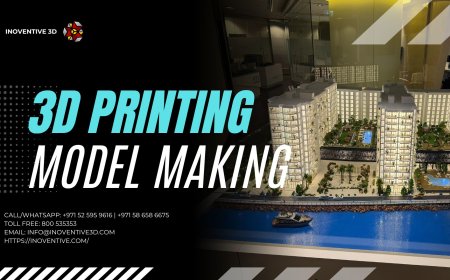Developing Clinical Judgment: Beyond Memorizing Signs and Symptoms
Developing Clinical Judgment: Beyond Memorizing Signs and Symptoms

Developing Clinical Judgment: Beyond Memorizing Signs and Symptoms
Introduction
Many nursing students enter their BSN Class Help programs with strong memorization skills. They excel at flashcards, vocabulary lists, and recall quizzes, quickly identifying signs and symptoms of diseases. However, nursing practice demands far more than isolated recall. True competence lies in clinical judgmentthe ability to assess a patient holistically, interpret data, prioritize care, and implement interventions with confidence and safety. Developing this skill requires moving beyond rote memorization to deep understanding, integration, and critical thinking. This article explores what clinical judgment is, why it is central to nursing, and practical strategies students can use to build clinical judgment throughout their education and into practice.
What is Clinical Judgment?
Clinical judgment is the process nurses use to notice patient cues, interpret their meaning, respond appropriately, and reflect on outcomes. It integrates assessment, analysis, prioritization, intervention, and evaluation. The NCSBN Clinical Judgment Measurement Model (CJMM) describes it in six interrelated steps:
- Recognize cues
- Analyze cues
- Prioritize hypotheses
- Generate solutions
- Take action
- Evaluate outcomes
Why Clinical Judgment Matters More Than Memorization
- Patients Present With Complex, Non-Linear Conditions
Real patients rarely match textbook definitions perfectly. For example:
- A septic patient may initially present with confusion before fever develops.
- A cardiac patient may have subtle shortness of breath and fatigue before obvious edema or crackles appear.
Without clinical judgment, students relying only on memorized checklists may miss early warning signs.
- Ensures Safe Prioritization and Intervention
Knowing symptoms is insufficient if you cannot:
- Differentiate between life-threatening and stable conditions
- Decide which assessment or intervention to perform first
- Evaluate if the intervention was effective or requires escalation
- Required for NCLEX-RN Success
The Next Generation NCLEX emphasizes clinical judgment, presenting case studies requiring students to analyze multiple data points, prioritize, and make decisions rather than identify isolated facts.
- Builds Confidence in Practice
Nurses who think critically can adapt quickly, anticipate complications, and advocate effectively for their patients.
Memorization vs. Clinical Judgment Example
Memorization Approach:
Patient has shortness of breath and edema. These are signs of heart failure.
Clinical Judgment Approach:
Patient has increasing shortness of breath and leg swelling. I notice crackles in the lungs and elevated BP. These suggest worsening fluid overload from heart failure. My priority is to assess oxygenation, place them on O2 if needed, elevate HOB, notify the provider for possible diuretics, and monitor output and respiratory status.
The second approach integrates assessment, interpretation, prioritization, and action.
How to Build Clinical Judgment Skills
- Develop Strong Foundational Knowledge
Understanding why signs and nurs fpx 4015 assessment 2 symptoms occur builds a framework for judgment. For example:
- Instead of memorizing that COPD causes barrel chest, understand air trapping, hyperinflation, and their effects on ventilation.
- Instead of memorizing that hypokalemia causes muscle weakness, learn its impact on cellular repolarization and cardiac conduction.
Tip: When studying, always ask why? and how? for each sign, symptom, lab value, and intervention.
- Practice Analyzing Case Scenarios
Use NCLEX-style case studies to:
- Identify relevant cues (subjective and objective data)
- Cluster cues to identify potential problems
- Prioritize nursing actions based on ABCs (Airway, Breathing, Circulation) and Maslows hierarchy
- Evaluate outcomes by asking, Did this intervention resolve the problem or is escalation needed?
- Incorporate Clinical Judgment Questions in Daily Study
Instead of traditional flashcards like:
- What are signs of hyperkalemia?
Use questions like:
- Your patients K+ is 6.2. What assessment findings do you expect, what are priority interventions, and what complications are you preventing?
This approach integrates knowledge application and prioritization.
- Engage in Active Learning During Clinical Rotations
- Anticipate: Before clinical, review your patients diagnoses and predict potential complications or assessments needed.
- Ask Why: During rounds or procedures, ask your preceptor to explain rationales behind decisions.
- Teach Back: After patient care, explain to yourself or peers what happened, why interventions were chosen, and how outcomes were evaluated.
- Use Concept Mapping
Concept maps visually connect disease etiology, signs and symptoms, labs, medications, interventions, and complications. This integration trains your brain to see patient conditions as interconnected systems rather than isolated facts.
- Apply SBAR for Clinical Communication
Practicing Situation-Background-Assessment-Recommendation not only improves communication but also organizes thinking for clinical judgment. Example:
- Situation: Mr. Lee is experiencing worsening dyspnea.
- Background: He has CHF, recently started on beta-blockers.
- Assessment: RR 28, O2 sat 89% on room air, crackles in lower lungs, elevated BP.
- Recommendation: Recommend oxygen therapy initiation and provider notification for possible diuretic adjustment.
- Reflect After Clinical Experiences
Reflection solidifies learning by connecting theory with practice. After shifts or simulation labs, ask:
- What cues did I notice?
- What did I miss and why?
- Were my interventions effective?
- How would I prioritize differently next time?
Building Clinical Judgment With Next Gen NCLEX Prep
- Practice Unfolding Case Studies
These mirror real-life progression, revealing information in stages. They build skills in:
- Recognizing emerging cues
- Adjusting priorities based on new data
- Integrating pathophysiology, pharmacology, and nursing interventions dynamically
- Utilize Nursing School Resources
Many programs provide resources like:
- ATI Real Life Scenarios
- HESI Case Studies
- Simulation labs with debriefing focused on judgment rather than task performance
Engage deeply in these to practice decision-making under pressure.
- Self-Test With Clinical Judgment Questions
When reviewing practice questions, go beyond selecting the correct answer:
- Identify what cues guided your choice
- Explain why incorrect options were ruled out
- Predict what could happen next if no intervention is implemented
Avoiding Common Pitfalls in Developing Clinical Judgment
|
Pitfall |
Solution |
|
Focusing only on memorization for exams |
Integrate application questions daily to practice prioritization and decision-making. |
|
Rushing through clinical skills without understanding rationale |
Slow down to connect theory with each action. Ask preceptors questions to deepen understanding. |
|
Fear of making mistakes |
View mistakes as learning opportunities. Reflect on errors to strengthen judgment skills. |
|
Ignoring holistic context |
Always consider patient history, labs, comorbidities, and psychosocial factors in assessment and planning. |
Integrating Clinical Judgment Practice Into Weekly Study Plans
Monday: Study a pathophysiology topic and create a concept map linking symptoms, labs, and treatments.
Tuesday: Practice 10 NCLEX-style clinical judgment questions on this topic.
Wednesday: Watch a short clinical scenario video and outline your assessment and intervention priorities.
Thursday: During skills lab, focus on the why behind each procedure.
Friday: Review and teach back the weeks topics to a study partner, including judgment-based prioritization.
Weekend: Reflect on clinical or simulated experiences, writing out what went well and improvement areas.
Example: Clinical Judgment for Pneumonia
- Recognize Cues: Fever, cough, crackles, increased RR, low O2 sat.
- Analyze Cues: Infection leading to alveolar inflammation and impaired gas exchange.
- Prioritize Hypotheses: Ineffective airway clearance vs. risk for sepsis.
- Generate Solutions: Assess breath sounds, administer O2, encourage coughing/deep breathing, prepare for antibiotics.
- Take Action: Implement ordered interventions promptly.
- Evaluate Outcomes: Monitor for improved O2 sat, reduced work of breathing, resolution of infection markers.
The Role of Faculty and Preceptors in Developing Clinical Judgment
- Provide Safe Environments: Simulation labs where students can make mistakes without patient harm.
- Ask Probing Questions: Why do you think this is happening? Whats your priority here?
- Encourage Reflection: Debriefing after clinical experiences to discuss decision-making processes.
- Model Critical Thinking: Sharing their own thought processes during patient care.
Long-Term Benefits of Strong Clinical Judgment
- Enhanced Patient Safety
Recognizing subtle changes in patient condition leads to timely interventions and prevention of deterioration.
- Professional Confidence
Nurses with strong judgment skills are trusted team members, able to communicate effectively with providers and advocate for patients confidently.
- Career Advancement
Clinical judgment is foundational for advanced practice roles, leadership, and specialized certifications.
- NCLEX Success
Beyond memorization, NCLEX tests your ability to think like a nurse, prioritizing safety and effective care in complex scenarios.
Student Testimonials: From Memorization to Judgment
In my first semester, I memorized signs and symptoms but froze in clinicals. My instructor made me explain the why behind everything, and now I can actually think like a nurse. BSN Junior
Practicing unfolding case studies changed how I read patient charts. I no longer panic when data doesnt fit textbook definitions. BSN Senior
Using concept maps to connect disease processes and interventions helped me prioritize better during my med-surg rotation. BSN Sophomore
Conclusion
Developing clinical judgment is a nurs fpx 4065 assessment 3 journey requiring consistent effort to integrate knowledge, recognize cues, prioritize effectively, and act safely. Memorizing signs and symptoms is only the starting point. True nursing competence emerges when you can assess patients holistically, interpret findings dynamically, and implement interventions with confidence. As you progress through nursing school, challenge yourself daily to go beyond definitions and recallask why, predict what could happen next, and evaluate your decisions critically. This mindset not only prepares you to pass the NCLEX but also to become a nurse who delivers exceptional, safe, and compassionate care to every patient entrusted to you.






































